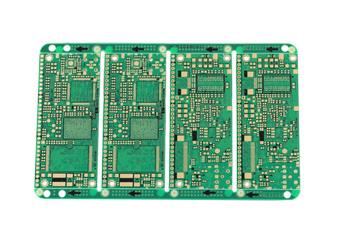PCB is one of the indispensable parts of electronic equipment. It appears in almost every kind of electronic equipment. In addition to fixing various large and small parts, the main function of PCB is to electrically connect various parts. Because the raw material of the PCB board is copper clad laminate, there will be a phenomenon of copper rejection during the production of automobile circuit boards. So what are the reasons for the rejection of copper on automobile circuit boards? Let me introduce you to everyone.
1. The PCB circuit design is unreasonable, and the thick copper foil is used to design the thin circuit, which will also cause the circuit to be over-etched and the copper will be thrown away.
2. The copper foil is over-etched. The electrolytic copper foils used in the market are generally single-sided galvanized (commonly known as ashing foil) and single-sided copper plating (commonly known as red foil). Commonly thrown copper is generally galvanized copper above 70um. Foil, red foil and ash foil below 18um basically have no batch copper rejection.

3. A collision occurs locally in the PCB process, and the copper wire is separated from the substrate due to external mechanical force. This poor performance is poor positioning or orientation, the copper wire will be obviously twisted, or scratches/impact marks in the same direction. If you peel off the copper wire at the defective part and look at the rough surface of the copper foil, you can see that the color of the rough surface of the copper foil is normal, there will be no side erosion, and the peeling strength of the copper foil is normal.
4. Under normal circumstances, the copper foil and the prepreg will be basically completely bonded as long as the high temperature section of the laminate is hot pressed for more than 30 minutes, so the pressing will generally not affect the bonding force of the copper foil and the substrate in the laminate. However, in the process of stacking and stacking laminates, if the PP is contaminated or the matte surface of the copper foil is damaged, it will also cause insufficient bonding force between the copper foil and the substrate after lamination, resulting in positioning (only for large plates) Words) or sporadic copper wires fall off, but the peel strength of the copper foil near the off-line is not abnormal.